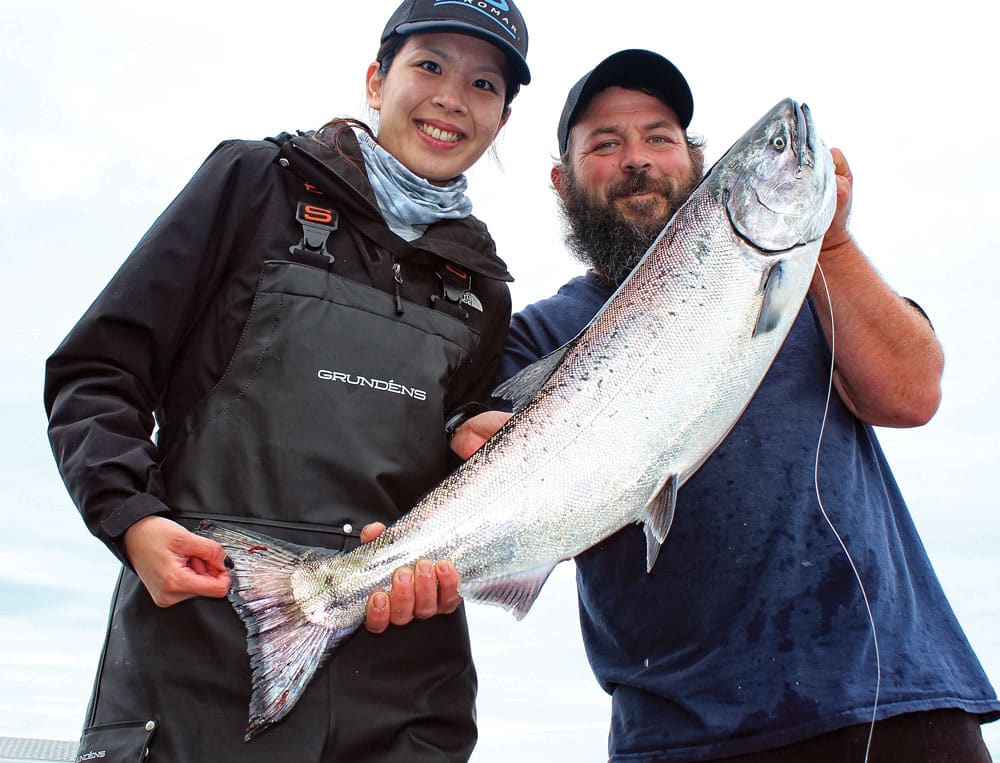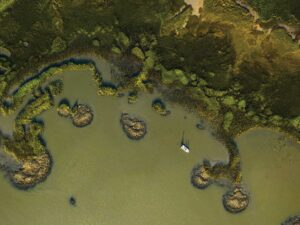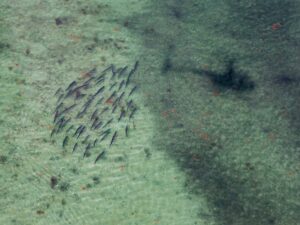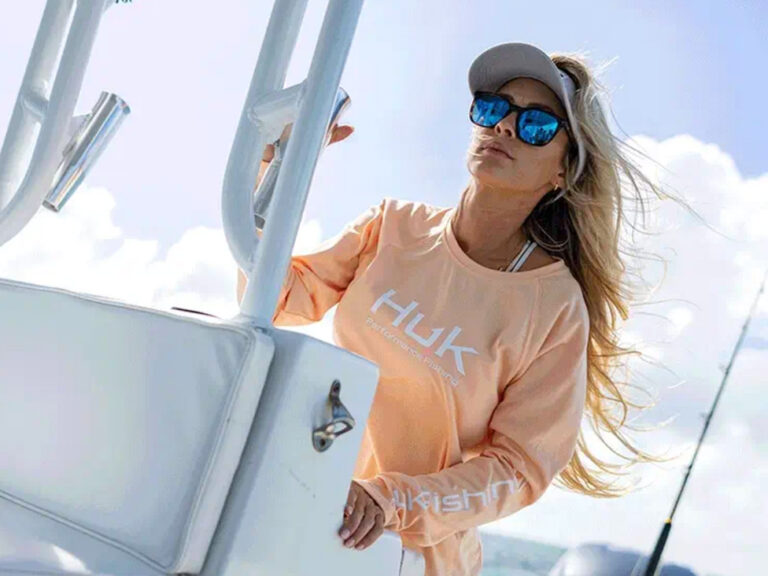
What goes up must come down. I repeated this immutable rule of gravity over and over in my head as I lifted the 8-foot jigging rod to the 10 o’clock position, then followed the descent of the lure with the rod tip until the line came tight. But suddenly, what went up stayed up, and after the slightest hesitation and a subtle pop telegraphed through the braided line, the rod came down, hard.
After a couple of quick reel cranks to seal the deal, I was solidly hooked into a powerful king salmon that bowed the rod and pulled line from the lever-drag reel in determined bursts. With a variety of go-to fighting moves that include head shakes and a penchant for rocketing toward the surface, Alaskan king salmon offer a spirited challenge — particularly when hooked on the light jigging tackle favored by the seasoned guides and captains of Frontier Charters in Sitka, Alaska.
Fast Facts for King Salmon Success
| King Salmon | Sitka, Alaska | |
|---|---|---|
| Time Saver | Vertical jigging is efficient and no time is wasted rigging baits or replacing the lost ones. | |
| Sounder Alert | Sonar warns when fish are under the boat and shows their depth for precise presentations. | |
| Zero Stretch | Lack of stretch on braided lines makes it easier to detect strikes and get solid hook-sets. |

Lox on the Hoof
This early June adventure to Sitka was my first time fishing exclusively with jigs and, if you’ll pardon the pun, I’m hooked. Not only is catching salmon via vertical jigging seriously fun, but at times it also clearly out-fishes traditional mooching with cut herring. This fact was driven home again and again as we metered schools of baitfish and salmon, depth-charged our lures down to the desired level, and quickly found ourselves wired to double or triple hookups of feisty lox on the hoof.
Vertical jigging works so well for Sitka kings because these heavy metal lures imitate two of their favorite foods: Pacific sand lance (aka needlefish) and juvenile herring. Given that I shared the rail for four days with Ben Hong and his wife, Zooey, from Ahi Tackle Company, maker of Ahi Assault Diamond Jigs, we had more than enough ammo for a four-day, lures-only fishing adventure. We scored using both of these lures in 4- and 6-ounce sizes and a variety of colors and finishes. In addition to these favorites, we also fished with 6-inch Point Wilson Darts, a narrow-bodied jig that mimics needlefish particularly well.

Tailored Presentation
The lures that worked best for us depended on a variety of factors, from the baitfish we metered, to the bottom structure below us, to the color of the sky.
“Sand lance love to burrow into soft, pebbly bottom, and when conditions are right, they pop up and show themselves in big schools,” says Mac Huffman, owner of Frontier Charters. “Kings know this, so we often concentrate on these needlefish beds by jigging right over this type of bottom.”
Huffman favors jigs with colored and/or painted finishes when skies are rainy or overcast (which, if you’ve been to southeast Alaska, is often). On sunny days, he has the most success with flashy, metallic finishes.

Jigging Tackle and Tactics
Time after time, our skipper marked schools of baitfish on his Garmin echo sounder — sometimes with the telltale “boomerang” marks of king salmon — and then he told us to drop our jigs. Frontier sets clients up with lightweight graphite jigging rods that have a soft overall action but enough tip power to effectively work the metal lures and control fish up to 30 pounds.
Rather than using line-counter reels, the rods are paired with small yet powerful Accurate lever drags spooled with multicolored PowerPro Depth-Hunter braided line. By following the guide’s instructions on how many colors to drop down, we consistently put our jigs in the strike zone. Once at the proper depth (anywhere from 30 to 200-plus feet), we worked the lures with a rhythmic pumping action.

The idea is to lift the jig sharply, then let it flutter and flash as it drops. It’s important to follow the fall of the lure with the rod tip so you don’t throw slack in the line. You also need to listen to the crew and react quickly if they tell you to wind or drop your lure to intercept salmon passing under the boat.
I’ve caught plenty of king salmon by mooching and trolling, yet I was surprised at the strength and violence of the jig strikes.
“Forget what you know about salmon being delicate biters,” Huffman says. “Make sure you have a firm grip on the rod.”
Jigging may be the ideal method for targeting Sitka king salmon — and not just because it gets bites. It’s no secret that Alaskan fishing lodges attract a mix of experienced and novice anglers. Vertical jigging, an active, hands-on fishing method, provides a sense of accomplishment, yet it’s easy to master and yields solid, reliable hookups on the strike.
Fight the Fish Right
When hooked on the vertical jig, king salmon first shake their heads and make short, powerful runs away from the boat. Then they rocket to the surface with speed that’s hard to keep up with.
“This is probably the hardest thing for novice anglers,” Huffman says. “They stop reeling because they’re sure the fish is gone. If they keep turning the handle and regain the slack line, they are usually able to guide the salmon to the net.”
Given my experiences catching salmon on traditional two-hook bait rigs, I wondered if the treble hooks on these heavy jigs would tear out during the fight. After four days of fishing, I would say our landing ratio was actually better than you’d experience while fishing with baits. The treble hook often pinned the salmon’s upper and lower jaws together, making it nearly impossible for it to work loose during the fight.

Lodge Life
At the Frontier Charters lodge, a 5,000-square-foot, four-story home with eight rooms, the day starts at around 5 a.m. with a full buffet-style breakfast cooked by Frontier’s own chef. Then, after packing your bag lunch from a wealth of choices (grab extra cookies), it’s down to the boat for a 6 a.m. cast-off. You usually get back to the lodge at around 4 p.m., when most people relax with a cocktail on the deck and swap fish stories. However, in June it stays light until after 11 p.m., which leaves plenty of time after dinner to shore-fish for Dolly Varden or, later in the year, pink salmon. The lodge has loaner spinning tackle and terminal gear available, and someone will happily steer you in the right direction. If you’re crazy like me, you won’t be getting much sleep.

Other Species to Catch in Sitka, Alaska
No Alaskan fishing adventure is complete without a healthy dose of halibut, lingcod and rockfish, all of which found our lures irresistible. Halibut up to 80 pounds, lingcod to 45 pounds and brightly hued goldeneye rockfish up to 20 pounds fell for 10-, 12- and 14-ounce Ahi Assault Diamond Jigs fished on heavy outfits. And we also caught all three of these bottom dwellers while casting and retrieving streamlined yet deceptively fast-sinking 16-ounce Savage Gear Cutbait Herring soft-plastic swimbaits.

SWS Planner and Tackle Box for Alaska King Salmon
What: Vertical jigging for king salmon
Where: Sitka, Alaska
When: From late May through June (fishing for kings slows after the July 1 commercial opener)
Who: A full-service lodge provides all you need in this exciting fishery.
Rods: 8-foot graphite salmon jigging rods rated for 12- to 30-pound line
Reels: Accurate Boss 270 lever drag, or equivalent
Line: 50-pound, multicolored depth-counter line, such as PowerPro Depth-Hunter braid, with a short shock leader of 30-pound mono
Lures: 4- to 6-ounce Ahi Assault Diamond Jigs and Ahi Live Deception Jigs; 41⁄2- to 61⁄2-ounce Point Wilson Darts









